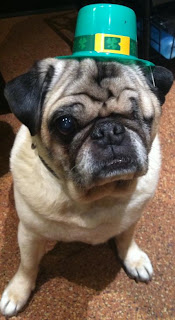I think almost everyone knows about rabies virus and that it
is just about 100% fatal - really scary stuff. What you may not realize is how prevalent it is and that
your pets have a real risk of exposure which is why vaccination is so critical
in our companion animals. In 2012
there were 60 animals that tested positive for rabies the District of Columbia.
That means in one year Animal
Control confirmed 39 raccoons, 20 bats and 1 fox tested positive in the 68
square miles that make up DC.
These critters aren't staying holed up in Rock Creek Park either, they are around our neighborhoods and in our backyards. In April a raccoon ran up to a man in
Georgetown while he was loading his car and bit him on the leg. That raccoon was later captured by
animal control and tested positive for rabies. A few years ago we had clients bring their cat into the
hospital after a raccoon climbed down their chimney, popped out of the
fireplace and attacked their cat.
 |
| This is as close as my cats get to the outdoors |
I routinely have a conversation with owners of cats who are
indoor only and never venture out into the world about why they need to be
vaccinated for rabies. The short
answer here is that it is required by law; unfortunately that is not always a
convincing argument for some people.
I then tell them that bats can worm their way into tiny spaces including
a hole in a screened window. These
tiny bats have tiny teeth that don’t always leave a mark on the skin
after a bite. It is entirely
possible that your indoor only cat could be exposed to a rabid animal without
you knowing about it.
If that doesn't sway them I then refer to a recent story out
of Georgia about a 15 year old, indoor only cat that had been vaccinated for
rabies in the past but the vaccine was past due. The cat bit the owner and ended up testing positive for
rabies. You can read the story by
clicking here.
Finally dog and cat owners need to keep in mind that if at
any time their pet bites someone and is not up to date on the rabies vaccine
the person who was bitten can request rabies testing. Rabies testing is done by euthanizing the animal and taking
sample of the brain. In my opinion,
unless there is a medical reason not to vaccinate it is much safer for everyone
to just keep your pet up to date on the rabies vaccine.









